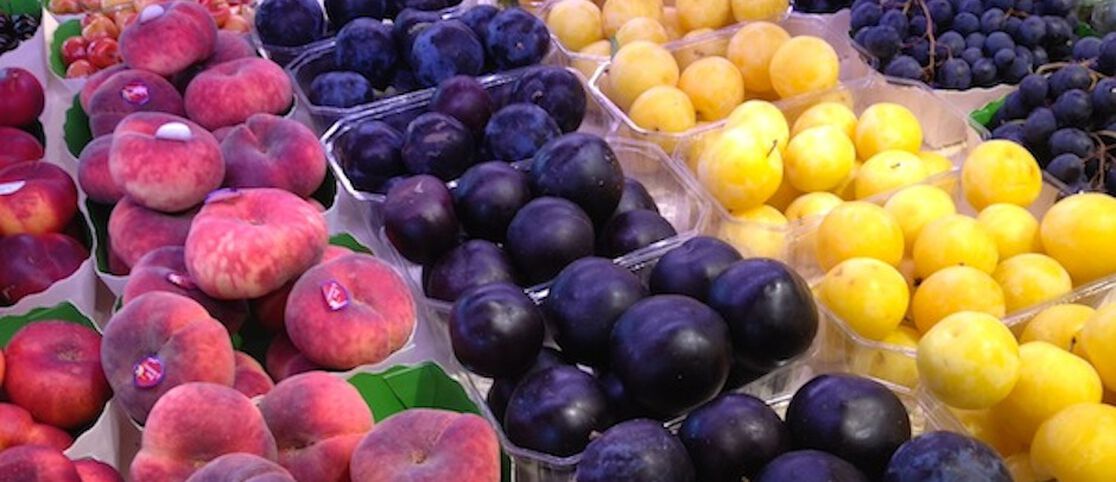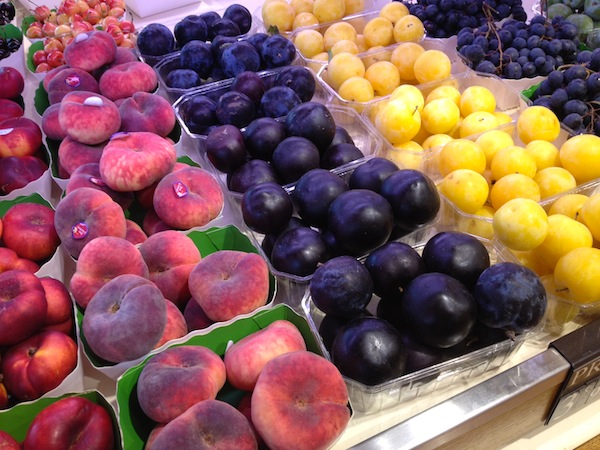Preparing for July 4th festivities and barbecues? Then summer salads, grilled veggies, and sweet fruits are likely on your menu. To simplify your grocery lists and help make the most of your famers’ market visits, check out our tips for selecting some of the most popular summer produce. Enjoy and share your tricks for finding the tastiest foods at the best value in the comments below, too!
Bell Peppers. Farm-fresh bell peppers in a rainbow of colors (orange, red, yellow, and green) are low in calories and high in vitamin C. They’re equally great served raw on a crudité plate or brushed with olive oil and cooked on the grill. Or toss them in your fave summer salad. Shop for bell peppers that are firm, feel heavy for their size, and don’t show any blemishes or bruises on the skin.
Corn. Summer wouldn’t be complete without fresh corn on the cob. The yellow and sweeter white versions are a staple at any barbecue and are best prepared boiled or on the grill. If you’re not in the mood for a warm side dish, consider slicing the kernels from the cob to make a cold corn and black bean salad. Buy corn with plump kernels and bright green husks for the most robust flavor.
Cherries. Stone fruits are the stars of summer, especially the classic cherry which is a good source of potassium. Whether you prefer sweet or sour varieties, both can be enjoyed as a simple dessert (everyone loves sharing a bowl of cherries) or baked into famous pies. It’s best to buy cherries during their peak season in July—and make sure to buy them ripe with their stems attached.
Figs. These sweet and somewhat exotic fruits complement savory foods like prosciutto, goat cheese, and arugula. If you love desserts more than appetizers, figs also make a lovely topping on vanilla ice cream. Pick figs that have a little sap around the navel, are tender to the touch (but not squishy), and don’t have bruises on their skin. They’re a good source of dietary fiber, too.
Plums. Domestic varieties of this beloved stone fruit are best bought during the summer through early fall, and they come in enticing colors from purple to maroon to red, yellow, or bluish-black. Surprisingly, take home plums with dull-looking skin and that yield to gentle pressure. And you can use our Fruit + Veggie Wash to remove the hazy coating once you’re ready to eat them!
Tomatoes. Starting this month, tomatoes (high in vitamins A and C) can be found everywhere and are anything but bland. Try Heirloom tomatoes, which have a rich flavor that pairs well with salads, fruits like peaches and watermelon, and even burgers! Grab tomatoes (on or off the vine) that are firm, without blemishes, feel substantial, and have a pleasant aroma. Despite the rising temps outside, don’t store your tomatoes in the fridge because they will be robbed of flavor.
Watermelon. Alone, in a salad, as a smoothie…watermelon is a refreshing summer treat. Like a tomato, watermelon is an excellent source of vitamin A, C, and lycopene. It also provides you with heart-healthy potassium and magnesium. Look for melons with crack- and bruise-free rinds and that feel heavy for their size (baby ones often stay fresh longer due to their thicker shells). If you’re purchasing a sliced watermelon, select one that has deep-colored flesh without white streaking.
And try to get organic produce when possible! The EWG's 2013 Shopper's Guide to Pesticides in Produce is a great source for identifying when it makes sense to buy organic versus conventional—and this includes bell peppers!
We aim to provide you with the most honest and credible information possible. This article was reviewed for accuracy by The Honest Team and was written based on sources that are linked at the bottom of the article.
blog_review_statement




